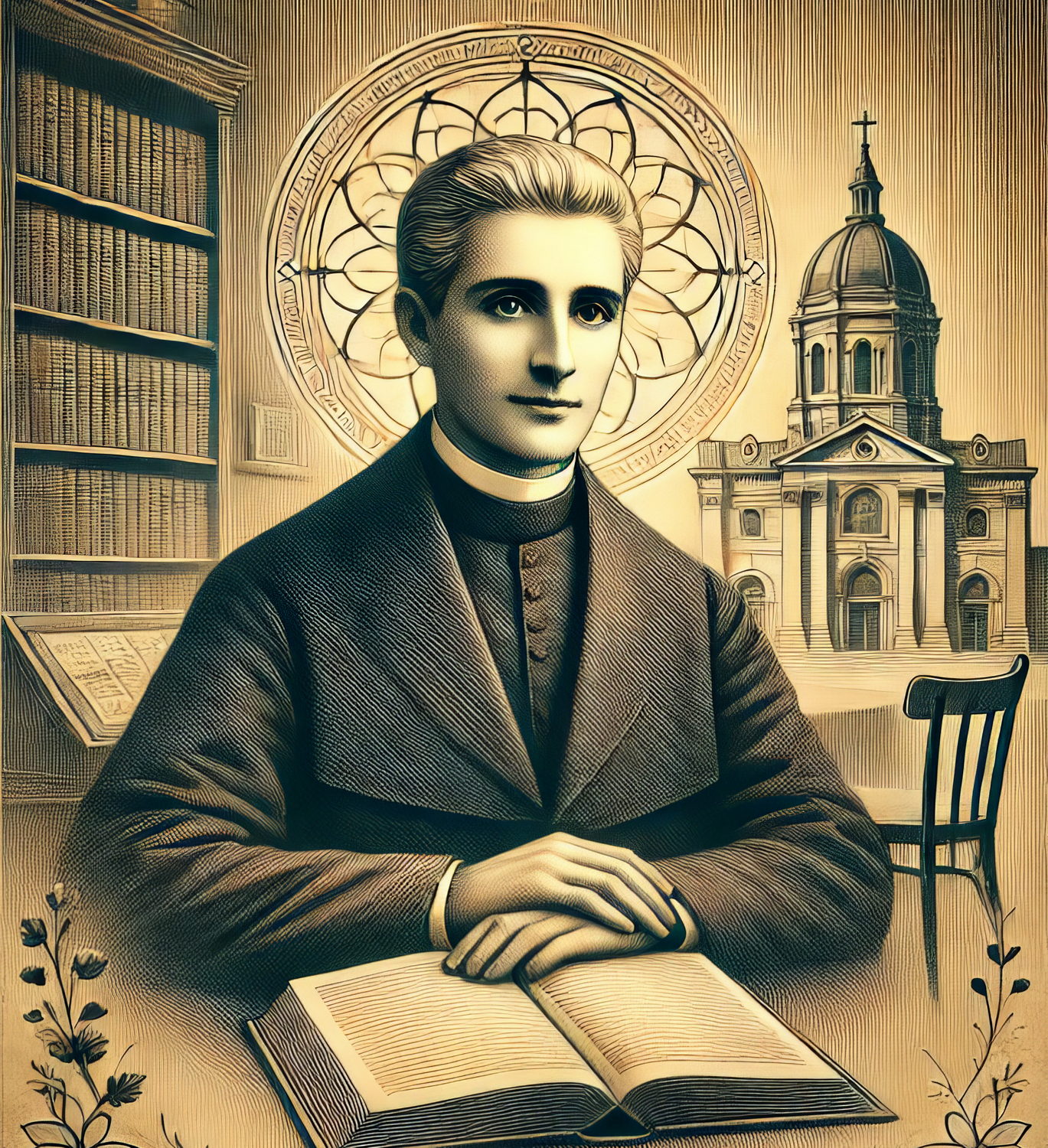Jean-Léon Le Prévost, a key figure in the history of the Society of St. Vincent de Paul (SSVP), was born on August 10, 1803, in Caudebec-en-Caux, Normandy. Although his name is less known to the general public, his contribution to the development of organized charity and the revival of faith during turbulent times in France is undeniable. With a life marked by personal challenges, he overcame adversity to become an example of dedication to others and to the cause of the Church.
Childhood and Education
From an early age, Le Prévost faced significant losses. Orphaned by his mother at just nine months old, he was raised by his stepmother, Rosalie Duchatard, whom he always spoke of with deep affection. Le Prévost attributed to her influence the formation of his charitable soul. During his childhood, a leg injury left him permanently lame, prompting his mother to search, unsuccessfully, for a cure at various regional shrines. However, Le Prévost never experienced physical healing, but in his old age, he remarked that this experience gave him a special bond with the Virgin Mary.
His father, who owned a small business supplying uniforms to Napoleon’s army, saw his business collapse after the emperor’s fall. At age 16, Le Prévost had to leave the Jesuit school in Rouen, where he was receiving a high-quality education. By the time he was 20, he faced another loss: his father passed away, leaving him with the responsibility of supporting his family and forging his own path.
A Young Man in Paris and His Separation from Faith
At 22, Jean-Léon moved to Paris in search of work and a new life. He secured a job at the Ministry of Education and Worship, but at the same time, he distanced himself from religious practice. This drift was gradual, influenced by external forces. In a letter to a friend, Le Prévost described how, during a trip, he lost the habit of praying the rosary and, within days, felt disconnected from God.
This experience of drifting away from faith is emblematic and not uncommon among young people who leave their rural homes to live in big cities. As an old superior of the Vincentian Religious once noted, Le Prévost went through a phase that many young people face: confronting material hardships and the loss of spiritual support amid growing urbanization.
The Return to Faith and the Encounter with Ozanam
However, Le Prévost’s story did not end there. Thanks to the good friendships he made in Paris, especially with committed Catholic young people like Victor Pavie, a classmate of Frédéric Ozanam at the University of Sorbonne, he found his spiritual way again. In a letter to Pavie, Le Prévost wrote about the value of friendship, calling it “truly sacred,” a sentiment that guided him back to the Church.
Between 1830 and 1835, Le Prévost attended lay groups that discussed religious and social issues. It was in this context that he met figures such as Ozanam and Bailly de Surcy. Together, they debated solutions to the problems of poverty and social inequality plaguing post-revolutionary France.
The Founding of the Society of St. Vincent de Paul
On April 23, 1833, on Ozanam’s 20th birthday, the Conference of Charity was born, which would later become the Society of St. Vincent de Paul. Le Prévost played a key role in the early years of the organization. Not only did he actively participate in the meetings, but he was also responsible for one of the most significant proposals: to place the Conference under the patronage of St. Vincent de Paul, the saint of charity. This decision was a turning point for the institution, which then reinforced its commitment to the poor.
Le Prévost’s involvement with the SSVP was far from passive. He served on the General Council from 1835 to 1855, and his leadership contributed to the development of numerous charitable initiatives in Paris and beyond. Under his presidency, the Mother Conference of Saint-Sulpice grew in dynamism and reach, serving as a model for other conferences.
Friendship and Collaboration with Ozanam
The relationship between Le Prévost and Ozanam was marked by great mutual respect. Although they disagreed on some points of view, both recognized the value of each other’s contributions. Ozanam, for example, expressed his confidence in Le Prévost in a letter from 1843, stating that placing him in charge of the Society’s affairs was “the best decision.” This kind of mutual admiration between the two leaders was crucial to the success of the SSVP.
Le Prévost was the driving force behind many of the initiatives that helped shape the Society in its early days. His work, the Holy Family, founded in 1844, was described as “the masterpiece of Parisian charity,” a testament to his commitment to the needy. (On Sundays, in the basement of the St-Sulpice church, he brought together the most humble families to bring them a little consolation and Christian formation.)
Lasting Legacy
Jean-Léon Le Prévost was not only one of the first to join the founders of the SSVP, but also an innovator in the field of organized charity. He deeply understood the importance of service that went beyond mere material aid, viewing charity as a manifestation of love for God. His life example, overcoming personal losses and physical challenges, continues to inspire all who are dedicated to serving others.
Although his contribution is sometimes overshadowed by the brilliance of Ozanam’s legacy, it is undeniable that Le Prévost was a driving force behind the growth of the Society of St. Vincent de Paul. His vision and leadership helped shape an institution that continues to serve millions of people around the world today.
In summary, Jean-Léon Le Prévost was a man whose life and work reflect God’s tenderness toward the poor, a living example of faith, friendship, and charity that transcends time and borders.
Article prepared with information from http://www.ssvpbrasil.org.br/








0 Comments